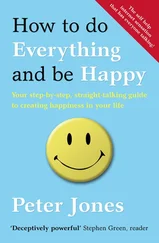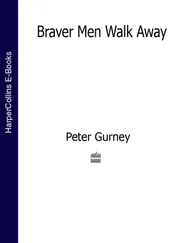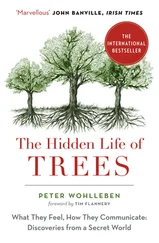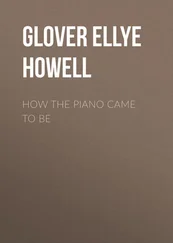Clumsy at the best of times, I teetered as I hesitantly stepped onto the ice from the gravelly surface where we’d geared up, immediately forgetting any concerns of balance or verticality as I soaked up the view in front of me. The glacier was inconceivably vast. On my right it stretched back down to the lake from which we’d come. To the left it was a daunting, chunky, corrugated mass of blue and white for miles until it disappeared into mist, from the top of which poked snow-capped Andean peaks. This was totally unlike the jungly, fetid South America of my imagination, and the surprise thrilled me.
If I’d done more research I might have had the foresight to pack some warmer clothes. I had thought that the light sweater I’d put on after my brief sleep would be adequate, but most of the group were wearing coats so thick and shaggy you’d think they’d skinned Chewbacca’s family.
‘What makes the ice so blue?’ an American woman in the group asked the guide. On our walk to the glacier this particular woman had delayed us twice by getting lost in an area only twice the size of a shoebox, and the group’s collective patience with her was wearing a little thin.
‘Smurf piss,’ I answered; though I was joking the colour of the ice was so vivid it seemed as if it could only be fake. I’d never seen such an intensity of blue outside of a butterfly’s wing, but unlike the flash of blue from a tropical moth in a forest, this went on for miles.
The woman looked at me blankly for a long moment.
‘The ice crystals are packed so densely that the only light that reflects off it is in the blue spectrum,’ our guide replied.
When I was a guide I might have run with the Smurf-urine theory just to see how long people believed me, but this guy was apparently more professional than I had ever been.
‘Here’s something,’ said another guide, a New Zealander, as he hunched over a small dark object on the ice.
I clomped over, the crampon blades crunching into the ice with each step, and looked down to where he was pointing. Incongruous in this pristine environment, a turd sat starkly on the ice.
‘Well hello, Roy,’ I said. ‘You following me?’
‘You name your poo Roy?’ the guide asked.
‘Um, no, that’s puma poo, and I had a puma named Roy.’
That undoubtedly made as much sense as my previous statement so I shut up. In Africa I used to hear stories of leopards turning up in unexpected places (a sports stadium in Cape Town, the summit of Kilimanjaro, and on a small island in the middle of the vast Lake Kariba). The leopards’ adaptability and ability to survive in any habitat were legendary. While the jaguars I yearned to see might look more like leopards, I was learning that pumas were the continent’s real equivalent.
As we went deeper into the glacier I concentrated on lifting my feet cleanly with each stride rather than shuffling lazily. If I put the spikes down on uneven ground or they caught because I dragged my feet I could be felled like a tree, hitting the hard blue ice face first. A slip and slide away from the carefully chosen route the guides were taking us on could lead to any number of deadly chasms. The guides pointed out one of these, and the sheer scale of the glacier became shockingly apparent as I peered down a shaft of over thirty metres, at the base of which water rushed as if possessed of a ferocious hunger.
My fear of heights kicked in and I was glad of the firm hold the New Zealand guide took on my belt. ‘Easy, mate,’ he said casually, and I realised I’d been swaying as I looked down into the chasm. With enormous concentration I lifted my clawed feet one by one and backed away from the hole.
We ate lunch soon after, some of us sitting on cloths that soon grew damp as the ice melted through them. Those who had brought plastic sheets probably felt smug—until their body heat melted a slick layer underneath the plastic, causing them to toboggan forward into the nearest obstacle (usually someone sitting on a cloth).
After lunch we were allowed to wander on the glacier by ourselves. I split from the others and made my way over mounds of ice carved into sensual shapes by wind and water, walking until I was out of sight of the group, then pausing, watching the steam of my breath plume in front of me in short bursts. It had taken Roy four weeks to get me fit and slim me down to wiry, and I’d spent the six weeks since piling weight back on at such a rate I was now fatter and less fit than when I’d first come to South America. After Roy I had the dedication to exercise of a sloth, and was rapidly getting the physique to match. I’d begun to find myself out of breath at the mere thought of doing something strenuous. Like chewing. I probably needed to do something about my weight, I thought, then stopped myself with a mental slap. I was trying to leave such city thoughts behind, avoiding places where what you looked like was important. In the wild, experience and ability are all that matter.
I stopped worrying about my gut and took in my surrounds. Around me was nothing but blue and white patterned ice, and I thought, ‘If I was left behind here, I would surely die.’ It had been years since I’d had such a thought, the last time being in the very different landscape of the deserts of Namibia. It was exhilarating to be able to think it again. In places where man is not dominant, but dwarfed and made insignificant by nature, I get an adrenalin rush. My time with Roy had been a rollercoaster-ride of adrenalin, but this was different. It was what I’d been missing for seven years. I promised myself to never again go without it for such a long time.
The feelings I had on the glacier have no name in English that I am aware of. It was a blend of respect for a place so inhospitable to my existence, coupled with gratitude that thus far it had not snuffed me out. Awe was also in there, as was a sort of love, both words so overused that they’ve lost much of their power. Contentment, that underrated emotion, was also present, but not for any good reason I could think of. (What sort of person mellows out on a chunk of ice destined, albeit slowly, to go off a cliff?) All I knew was that right then if I’d had a tail I’d have wagged it.
Funnily enough, I hadn’t expected to feel like this here, having previously only felt it in places where animals might eat me, and—snobbishly, naively—I hadn’t expected to experience it on a group tour. I realised my guides would probably scoff at such feelings, just as I had once scoffed when people on my safari tours told me that they’d been sure they would die after receiving an aggressive look from some lion/elephant/sparrow. Maybe I owed a few people some apologies.
My reverie was interrupted by one of the guides, come to check that I hadn’t fallen into a ravine. ‘You okay?’ he asked.
‘Better than okay!’ I shouted back.
Then it hit me: I’d just been soul searching. ‘Well, I’ll be,’ I thought, surprised at myself. ‘The place works!’
The Road from Patagonia

After the awe-inspiring magnificence of the Perito Moreno glacier I was brought back to earth with a thud by my next Patagonian stopover in a place called El Chaltén, a day’s bus ride from El Calafate. My stay there turned out to be pleasant but unexciting; the rare and endangered deer species I had hoped to see turned out to be as elusive as a park ranger had predicted, and the pumas he’d told me other tourists had seen also stayed away. Even the well-known peak of Mt Fitz Roy stayed shrouded in fog.
El Chaltén’s bars were filled with glum-looking climbers, some of whom had been waiting weeks for the notoriously temperamental weather to clear enough for them to summit. I was amazed that any cloud could stay put, as the wind was even fiercer than the other places I had been in Patagonia so far. It shoved me around like a schoolyard bully, making me wonder if maybe I should join the climbers for a few beers and fatten up even more.
Читать дальше













